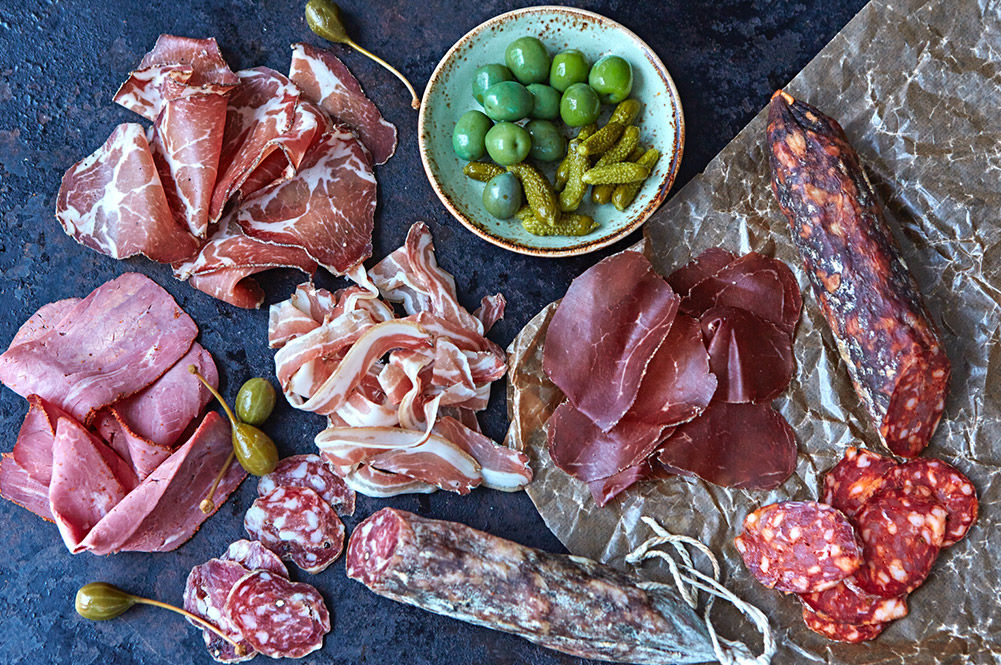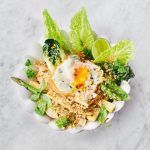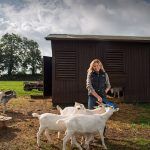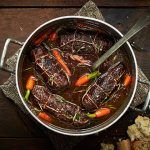When we think about charcuterie in the UK, it is most likely to be with a faraway look in our eyes as it transports us to time spent abroad. Although curing meat is a celebrated culinary craft on the Continent, it is yet to be thought of as an integral part of our own British food heritage. But this is all about to change, as there is a very British cured food revolution coming sharply into focus…
There has always been a strong history of preserving food in the British Isles, but we have become disassociated from it because we look towards Spain and Italy as the main proponents and producers of cured goods. Bacon is perhaps our best example of charcuterie, although it doesn’t rank amongst the most highly-rated products of designated origin such as ibérico ham or cold smoked chorizo.
WHERE DID CHARCUTERIE COME FROM?
Charcuterie derives from the French tradition of using pork and fat so that it could be sold uncooked through the ingenious processes of salting, turning into sausages or via pâtés and rillettes. The term ‘charcuterie’ actually translates as ‘flesh’ (char) and ‘cooked’ (cuit), and the movement came about as a result of restrictive legislation that included a ban on selling raw pork.
‘Salumi’ has its roots in Italy, and is especially focused on dry-curing and air-drying pork and other meats into classic products such as salami, prosciutto, lardo and pancetta. Both traditions were born out of necessity so that gluts of meat could be used beyond the normal perishable date to feed many people.
WHAT’S NEW?
Six centuries on from when the first Guild of Charcutiers was established in Paris, there’s been little in the way of change. Yes, there’s been the introduction of modern commercial factory outlets making and selling charcuterie and cured goods, but they bear only the name of recognised cured goods and none of the quality of the independent, traditional curers. However, the quality products aren’t restricted to France or Italy – there is a great deal of wonderful charcuterie emanating from Spain, Scandinavia and Eastern Europe. And now there is a major charcuterie-charged revolution from Britain that is about to put the deli back into delicious.
WHAT ABOUT BRITISH CHARCUTERIE?
At last we’ve woken up to the fact that even though our preserving and curing lineage has been broken, we’ve got everything we need to create world-renowned cured goods. Just like the sudden rise in the quality of our sparkling wines (which regularly knock French vines out of the terroir), there are some British charcutiers making products to rival the best Europe has to offer.
The main reason why Britain is making huge strides in this area of artisan food production is because of the abundance of quality meat that is being produced using the highest animal welfare standards and good husbandry methods. Salting, drying and smoking food is not a technique for making below average ingredients barely palatable; it is a layer of skill and craft applied to fantastic quality meat, which in time turns it into preserved perfection.
DIFFERENT TYPES OF CURED MEATS
SALAMI
Salami is one of the oldest forms of curing and perhaps one of the most extreme because it requires a period of fermentation before slowly drying and maturing. It can be made from any minced meat (traditionally pork) and should contain a certain amount of fat to retain moistness and flavour. The meat could come from an area of the pig that has a natural balance of fat to lean, such as the shoulder or belly – or with lean meat, back fat is added to the mix and appears like lovely white mosaic cubes when sliced. Salami is often reduced to pizza topping, although it can take centre stage on any charcuterie platter.
PANCETTA
Pancetta and coppa are also traditionally made from pork, yet where pancetta is common because it’s similar to streaky bacon, coppa is a bit of a mystery. Pancetta is a cured piece of pork belly that, once fully cured, can be sliced and eaten raw, or before sufficiently dried out, can be cooked. Pancetta lardons are great in soups, stews and pasta sauces or even sliced and placed over a pheasant breast to protect it from drying out on cooking. Coppa is a cured muscle that runs from the shoulder into the neck – which is not a common cut in the UK but has wonderful marbling which, when sliced, looks like a river’s tributaries viewed from space.
BRESAOLA
Beef production in the UK is also of the highest standard and is used to make bresaola – often a dry-cured fillet of beef finished in a cold red wine bath, before being dried and sliced thinly to look like stained glass windows of a church. Bresaola is classically served with rocket and shaved parmesan and drizzled with olive oil as a starter.
PASTRAMI
Then there is pastrami, which is viewed as a typical New York deli classic. You often see it served on rye sourdough with pickles, but it is in fact much closer to being British than American. Pastrami is actually Yiddish/Romanian in origin and historically was cured brisket which was then cold-smoked and cooked in a pot of stock. The British version of this dish was salt beef or corned beef and was actually created by the Navy, so that they could feed crews on long journeys across uncharted waters. Although the individual herbs and spices of true pastrami such as ginger, garlic, coriander seeds and black pepper weren’t part of the Navy version, the techniques were similar.
So much momentum has been gained in the UK over the last few years, that we’ve now got some independent charcuterie producers pioneering methods to create cured goods without the need to add any artificial curing agents. Nitrate-free cured meats are being seen as the epitome of craft and skill, because they are as close to the original cured meats our ancestors ate, but under controlled conditions and without any risk of bad bacteria. There is still some way to go before this becomes the commercial norm, but I’m sure the rest of Europe is looking over its shoulder…
Check out my top 4 British charcuterie producers:
- Cobble Lane Cured
- Good Game (nitrate-free charcuterie)
- Henson (perfect pastrami)
- Trealey Farm (multi-award winning charcuterie)























